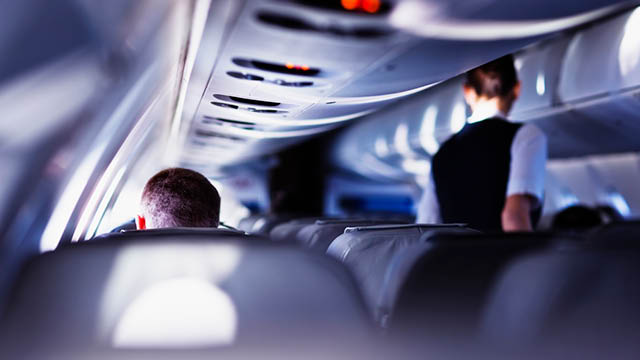5 Things You Should Never Touch on a Plane
Avoid touching these areas of a plane to minimize germ contact

Your carry-on might have just gotten a little bit heavier—because a recent study from Travelmath may lead you to pack a Hazmat suit on your next flight.
The website sent a microbiologist to swab and analyze samples from various locations in five airports and four flights to determine the bacterial presence on different surfaces. The results weren’t surprising: Airports and airplanes are much dirtier than our homes.

Based on the research, here are the top 5 things (in no particular order) you should avoid touching on airplanes to avoid germs:
1. Tray tables
Based on Travelmath’s survey, your tray table is the dirtiest part of the plane. The ridges in the porous plastic meant to keep your drink and belongings in place actually create a breeding ground for microbes to attach themselves. Consider putting a napkin down on your tray table rather than eating your next snack directly off the plastic.
2. Bathrooms
The bathroom on most planes is actually cleaner than the tray table, but can still have a lot of germs.
3. Overhead air vents
Since most passengers touch the nozzle that controls the air vent, the plastic can be full of bacteria.

4. Seatbelts
While the metal buckle is actually difficult for microbes to attach to, the porous fabric of the belt itself creates the perfect environment for microbes to attach.
5. Seat back pockets=
It’s ironic that the safety information is located in the seatback pocket since this is one of the least safe places in terms of germs. Passengers use the seatback pocket as a dumping ground for trash, half-eaten food and more. A recent study from Auburn University found that MRSA can live for 168 hours on a cloth seatback pocket.
You can’t avoid touching most of these surfaces. However, you can come prepared to avoid picking up germs. Consider packing hand sanitizer in your carry-on bag, or bringing disposable cleaning wipes to cleanse potentially germy surfaces.
